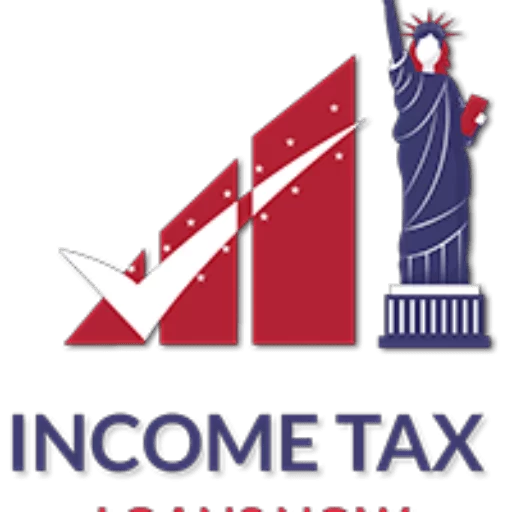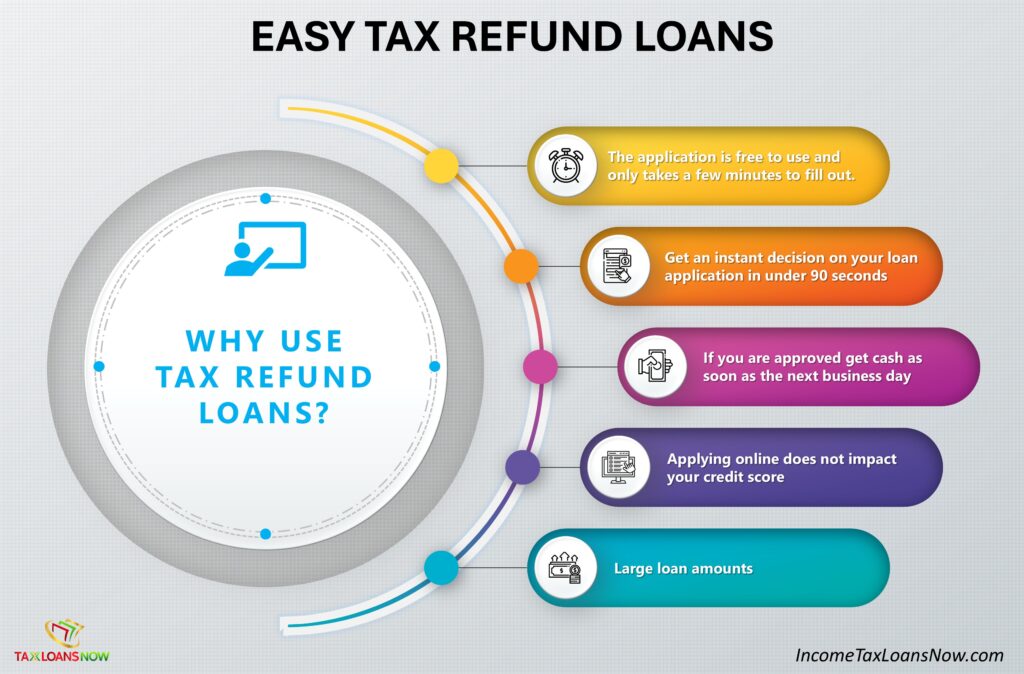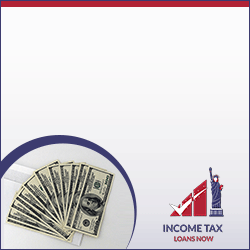When paying tax in 2023, one needs to know exactly which things to declare. This means that you need to know if student loan forgiveness is taxable. In this article, we’ll take a brief look at student loan forgiveness, federal student aid, and other forms of debt relief related to student loans. After that, we’ll discuss whether or not this type of debt relief or student loan forgiveness is taxable and even how to calculate any valid taxes. Let’s get into it.
Explaining Federal Student Loan Forgiveness
While it may be a term that we hear often, few people truly understand what student loan forgiveness and its various forms (such as public service loan forgiveness) are. Let’s define these terms and then discuss how they need to feature when doing tax in 2023.
What is a student loan forgiveness program?
Student loan forgiveness is when the government or a company cancels or discharges all or part of your student loan. There are various different types of student loan forgiveness that can occur under some circumstances. Some of the major types of student loan forgiveness include the following:
- Public service loan forgiveness – this type of loan forgiveness occurs when eligible borrowers have made 120 qualifying payments while working for an employer like a government agency or non-profit organization. In order to qualify for this type of student loan forgiveness, you must meet the following requirements:
- Employment: you might have permanent employment with an eligible organization.
- Loan type: only direct Loans are eligible for this type of loan forgiveness.
- Payment requirement: you must make 120 qualifying payments under an eligible repayment plan while working for a qualifying organization.
- Income-driven repayment forgiveness – under this type of program, eligible borrowers make payments based on certain defining characteristics (like income size and the size of their family). After a predefined period of time, typically between 20 and 25 years, of qualifying monthly payments, the remaining balance of the loan will be forgiven. The eligibility requirements for this type of loan forgiveness include the following:
- Loan type: most federal student loans qualify, including direct Loans and federal family education loans (FFEL).
- Repayment plan: to qualify, you must enroll in one of the income-driven payment plans, including options like:
- Income-based repayment (IBR)
- Pay as you earn (PAYE)
- Revised pay as you earn (REPAYE)
- Income-contingent repayment (ICR)
- Payment requirement: To qualify, you need to make a certain amount of qualifying payments, typically lasting for a period of 20 to 25 years.
- Teacher loan forgiveness – this type of program provides student loan forgiveness for teachers who have worked for low-income schools or educational institutions (certified by the Department of Education) for at least five years. They are eligible for up to $17,500 worth of student loan forgiveness on direct loans (either subsidized or unsubsidized loans). To qualify for teacher loan forgiveness, you must meet the following eligibility criteria:
- Employment: you must teach at a low-income school or educational service agency full-time for five consecutive years
- Loan Type: subsidized and unsubsidized Direct loans or subsidized and unsubsidized federal Stafford loans.
- Closed school discharge – student loan forgiveness may apply to borrowers if their educational institution closes down while they are enrolled or within a certain time after withdrawal. In these cases, a loan discharge may apply through the full borrowed amount. Particularly, eligible borrowers must meet the following criteria:
- School Closure: the educational institution or school that you were enrolled in must have closed while you were attending a within a certain period afterward.
- Ineligibility for degree completion: in order to qualify, you must have dropped out of the program that you were enrolled in due to the school’s closure. If you completed your program of study at another school through a teach-out agreement or by transferring academic credits, then you do not qualify for this type of student loan debt relief.
- Total and permanent disability discharge – any borrowers who are permanently disabled and unable to work may qualify for a discharge of their federal student loan debt. In order to receive this type of loan discharge, applicants must meet the following criteria:
- Disability: your disability must be total and permanent and of such a severity that prevents you from engaging in substantial gainful activity.
- Documentation: you need to provide documented proof of your disability as extended by a qualified physician or through the Social Security Administration.
Types of federal student loans that qualify for forgiveness
Not all student loans and federal student loans are viable for forgiveness. However, if your student debt consists of any of the following types of loan, you may have a shot at loan forgiveness:
- Direct Loans, including the following:
- Direct subsidized loans
- Direct unsubsidized loans
- Professional and graduate PLUS loans
- In some cases, Direct consolidation loans
- Federal family education loans (FFEL)
- Perkins loans
It’s important to keep in mind that not all forgiveness programs will consider all of these loans to be eligible for forgiveness. However, if you apply to the correct program, and meet the qualifying criteria, then you may be able to receive relief or forgiveness for your student debt.
Taxation of a Federal Student Loan Forgiveness Program
Now we get to the real question when you do taxes in 2023 on your student loan forgiveness? The most straightforward answer to that question is it depends. In some cases, student loan debt relief is considered taxable income. So let’s take a closer look at the taxability of student debt relief.
The Taxability of Debt Relief
As mentioned earlier, there are several different student loan forgiveness programs that you can participate in, which make you eligible for forgiveness or discharge of your loan.
- Income-driven repayment plan or program – If you are participating in an income-driven repayment forgiveness program, then the forgiven amount is considered taxable. In these cases, you will need to consider and calculate the value forgiven on your federal student loans when doing your taxes in 2023.
- Public service loan forgiveness (PSLF) programs – when participating in public service loan forgiveness programs, the debt relief amount that you receive may be considered taxable. It would be wise to contact your student debt forgiveness provider and find out whether or not the forgiveness you’ve received is taxable.
- Teacher loan forgiveness programs – teachers who have received debt relief for their federal student loan through the teacher loan forgiveness program only receive a limited amount of funds. The $17,500 they receive will not be considered taxable income.
- Closed school discharge programs – if you qualified for the closed school discharge, then you will not be held accountable to pay tax on the amount that was discharged.
- Total and permanent disability discharge programs – if you’ve received a discharge of your federal student loan due to permanent and total disability, you won’t be expected to pay any taxes on the discharge amount.
Calculating the Taxable Amount
Once you’ve determined whether or not your income-driven repayment plan or other form of loan forgiveness, debt relief, or loan discharge is taxable, you’ll need to calculate exactly how much tax you need to pay. He is a step-by-step process you can follow to calculate the taxable amount of your debt relief:
- Step one – determine the amount of money that has been forgiven or the amount of student loan debt relief you have received. Typically, your loan servicer or lender will be able to provide you with this information.
- Step two – review any exemptions or exclusions within your specific forgiveness program. As mentioned above, not all debt relief or loan forgiveness programs are eligible for taxation. In other cases, only a portion of the forgiven amount is taxable. Before calculating anything else, contact your student loan servicer, and review the paperwork that went with your loan forgiveness program, to ensure that you don’t pay taxes on excluded or exempted funds.
- Step three – calculate the fair market value of the forgiven debt. If your loan forgiveness or debt relief is taxable, you will need to determine the fair market value of said debt before you can consider the taxable value. Most often, the fair market value will be equivalent to the sum of the borrower’s unpaid monthly interest and the outstanding principal (which isn’t equivalent to the total unpaid loan payments since that includes interest as well) at the time of forgiveness.
- Step four – report the taxable amount on your tax report using the appropriate form. Typically, this will be form 1099-C, and most loan services or lenders will be able to provide you with that.
Before embarking on the tax journey where your federal student aid or student loan relief is concerned, discuss the current tax laws with your loan servicer. It may also be a good idea to consult a tax professional. Remember that tax laws are complex and change regularly, and even a small mistake can lead to big charges later on. It’s better to pay a knowledgeable expert and rest assured that your taxes are done correctly.
Impact of Taxable Forgiveness on Borrowers
When paying tax in 2023, taxable loan forgiveness can have a serious impact on borrowers. Just a few of the ways in which taxable forgiveness affects student loan borrowers include the following:
- Increased tax liability – If a forgiven federal student loan debt qualifies as taxable income, it can significantly alter the borrower’s tax liability in that year. Because the forgiven amount alters the taxable income reported, it can push them into a higher tax bracket and significantly increase their annual tax payment.
- Lump sum tax payment – Tax payments often take the form of a large lump sum. Depending on the remaining balance of the direct loan or other student loan, when forgiven, this can lead to a high tax payment needing to be paid at the same time. Unfortunately, this can be challenging for those with limited financial resources.
- Potential financial strain – Forgiven, yet taxable, federal student loan balances, especially when sizable, can place a large amount of financial strain on borrowers. Especially when it pushes them into a higher tax bracket or they weren’t budgeting for such a large tax payment. In many cases, the taxability of debt relief programs leads to worse financial situations for the borrowers unintentionally.
- Need for tax planning – Because borrowers need to be aware of, and prepare for, the taxability of having their federal loans forgiven, it can cost extra time and money. This can mean consulting a tax professional or another financial professional.
- Impact of other benefits – Unfortunately, while it may seem that having student loans forgiven will improve your financial status, it can have unanticipated side effects. If you’re the recipient of means-tested benefits or tax credits (the earned income tax credit, for instance) or certain health subsidies, the increased reported income resulting from a student loan forgiveness program can mean you’re no longer eligible.
- State tax considerations – If they cancel student debt on your federal student loans or student loans held by another company (but federally approved), it won’t just affect your national taxes. It may also affect your state taxes. Since these vary from state to state, you’ll need to do local research to determine the potential financial harms that may result from student loan forgiveness.
These are just a few of the ways that having your federally held student loans forgiven may affect your overall financial status. Unfortunately, while having your federal Perkins loans or other loans forgiven means that you miss out on a monthly payment, it can change your entire financial economy (and not necessarily for the better).
So, before applying for debt relief, it’s always a good idea to speak to your loan servicers and a tax professional. Having a borrower’s loan balance forgiven or canceled can be a wonderful thing, but only if you’ve taken the necessary precautions and know what to expect. Don’t allow unpleasant tax surprises and other side effects of loan forgiveness to give you an unpleasant surprise when paying taxes in 2023.
Recent Changes and Future Outlook
It’s worth noting that regular changes occur to the taxation of debt relief, both in terms of loan forgiveness and other sorts of relief programs. Some of the most recent changes and proposed changes include the following:
- The CARES Act – as a response to the economic impact of Covid19, the government launched the Coronavirus aid relief and economic security (CARES) Act. Among other things, the act provides temporary tax relief for student loan borrowers. Under this act, any student loan forgiveness occurring between the 27th of March 2020 and the 31st of December 2025 is 100% tax-free, regardless of which forgiveness program was followed.
- Legislative proposals – over the last couple of years, several legislative proposals have been tabled that attempt to address student loan forgiveness and its related taxability. The proposals all aimed to enhance tax relief by making student loan debt forgiveness non-taxable. Unfortunately, thus far, it does not seem as if any of these proposals have been 100% successful. However, with persistent attempts, there are high chances of success.
Fortunately, the outlook on this aspect is positive. Thanks to an evolving political landscape, student loan forgiveness, and the related tax implications continue to be hot topics in the political Arena. With changes in government administration or shifts in the political atmosphere, new proposals and tax reforms become more likely every day.
It’s also heartening to see so many different political elements working towards legislative changes regarding the taxability of student loan forgiveness and debt relief.
Another aspect that spells positive things for the taxability of student loan forgiveness includes the evolving economic conditions. If economic conditions change for the better, it’s likely that student loan debt forgiveness and other similar debt relief programs will have a better chance of becoming untaxable.
For the moment, the CARES Act is providing some hope for recipients of student loan forgiveness and will continue to do so for at least two more years. We can only hope that we continue to see more tax relief initiatives and legislative changes with positive effects on recipients of debt relief.
Income tax loans for student loan forgiveness taxes
Debt relief is a fantastic tool that can help to make your life easier. Not having to budget for monthly loan payments places you in a better position to deal with life in general. However, thanks to the taxation that goes with loan forgiveness, you might end up swapping out your monthly payments for a single lump-sum payment in terms of taxes.
One way of ensuring that you have enough funds to pay for the tax-related aspects of loan forgiveness is to take an income tax loan. There are several advantages to this approach, including the following:
- Access to funds – if you believe that you’ll have a high tax liability, it can be an uncomfortable situation. This is especially true for low- and middle-income families. Income tax loans give you access to funds you wouldn’t otherwise have and allow you to break up a single lump sum into smaller monthly payments.
- Quick processing – another advantage to income tax loans is that the loan providers generally process them very quickly. This means you have quick access to funds when you need them the most and don’t get stuck with an unpaid tax bill.
While there are many advantages to an income tax loan, there are some things to bear in mind when he wants to go this route to pay for student loan debt forgiveness-related taxes. Aspects to consider include the following:
- Creditworthiness – as with many other types of loan, an income tax loan takes into account your credit history and creditworthiness. If either of these aspects is lacking in your case, you may struggle to get an income tax loan or to get the full value that you want. However, if you’ve qualified for student loan forgiveness, that likely means you have an excellent history of making monthly payments, which places you in an excellent position for receiving an income tax loan.
- Your anticipated tax refund – income tax loans are typically based on the expected tax refund you are likely to receive. However, if you don’t receive a tax refund of the size anticipated and the loan is quite large, you will still be responsible for paying back the full size of the loan.
- Repayment terms and costs – income tax loans can have very high-interest rates and may have hidden costs. If you do decide to take an income tax loan to help pay for the taxation related to your student loan forgiveness program, ensure that you’re using a trusted and reliable loan provider. Before signing up for an income tax loan, ensure that you read all the terms and conditions carefully to avoid nasty surprises.
Conclusion
If you’ve been wondering whether to pay tax on your student loan forgiveness when doing taxes in 2023, then the CARES Act means you’re safe, at least for the moment. It also means that there’s a student loan pause on all student loans held by the Department of Education. This does not mean that your loan has been forgiven or discharged, merely that all student loans held by that particular branch of the Federal Government offer a temporary payment pause on the remaining balance of the loan.
That said, many different types of student loans are taxable when forgiven. So, if you’ve just taken out a loan or your loan will be eligible for forgiveness after the 31st of December 2025, you’d be wise to start considering the ramifications now.
Possibly one of the best ways to deal with the increased tax brackets or the expected lump sum that go with debt relief or forgiveness is to take out an income tax loan and pay it back once you receive your tax return. It gives you the cash that you need when you need it and allows you to break up the original lump-sum payment into smaller monthly payments that are easier to manage.

Steve Mccaffrey
Author
Steve is a top contributing author and best seller. He has been featured on several programs and brings his extensive knowledge to our business and blog section. He is a dedicated to his family and his craft.
Related Reading
Easy Tax Refund Loans
[lwp_divi_breadcrumbs _builder_version="4.27.4" _module_preset="default" theme_builder_area="post_content"...
Fastest Early Tax Refund Loans
Is There A Way To Get A Loan On Your Tax Refund? Yes there is a way to get a loan on your tax refund....
Borrow Money Black Friday
Can I Borrow Money for Black Friday 2024? Yes, it is possible to get cash by applying for a loan...





